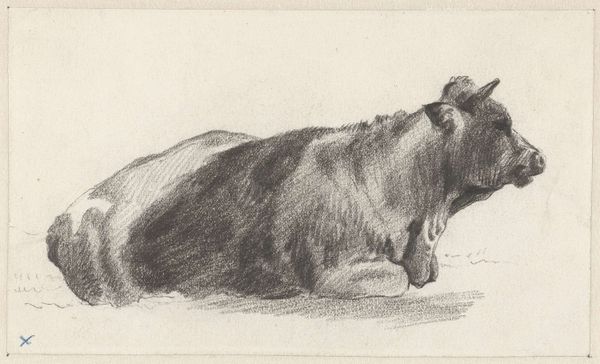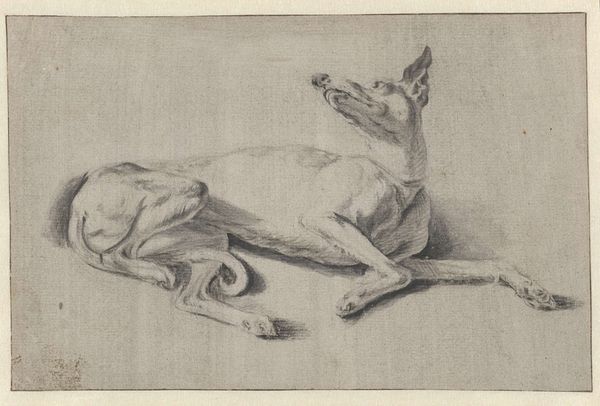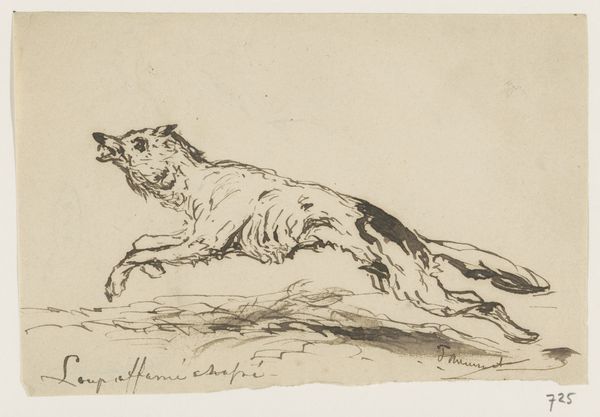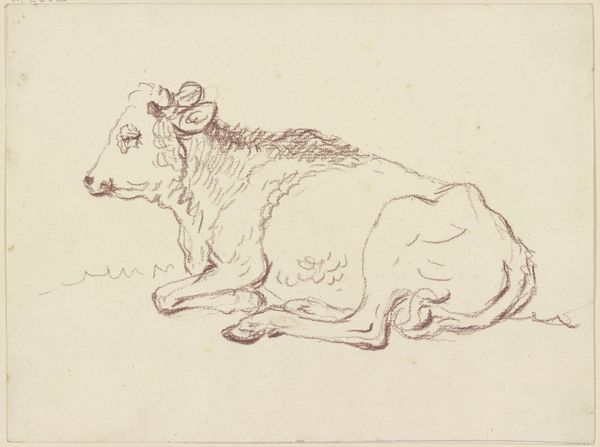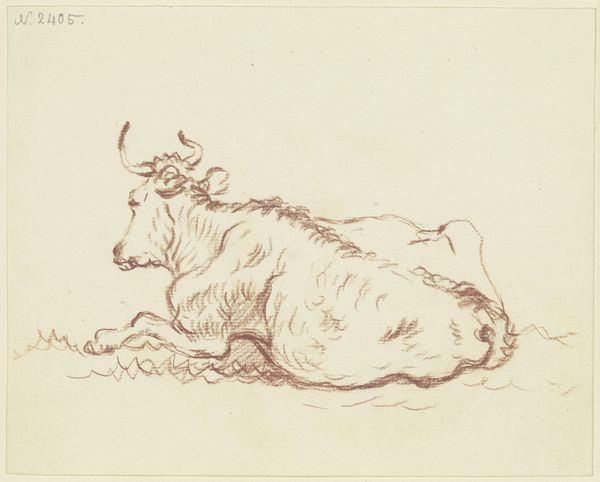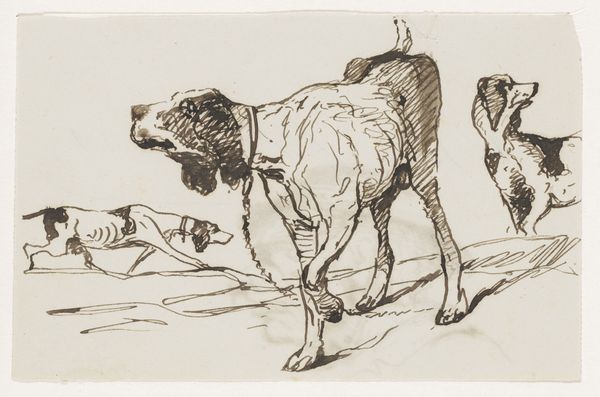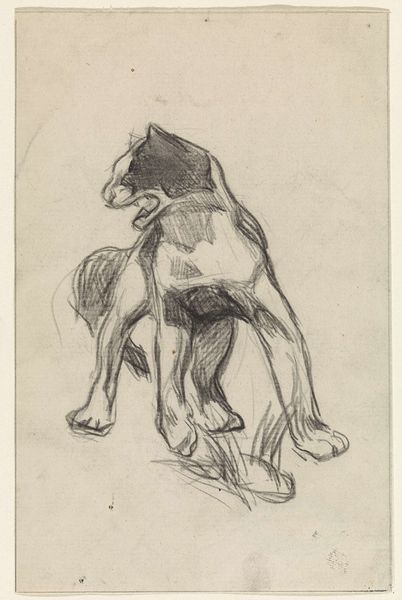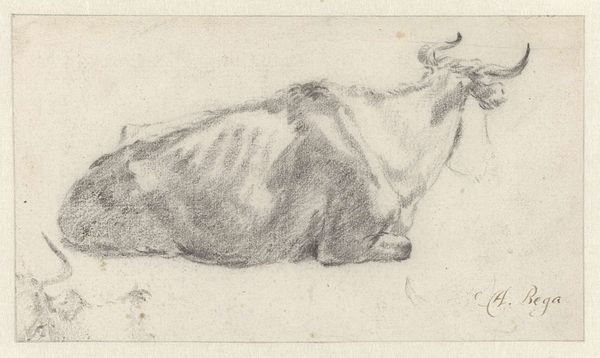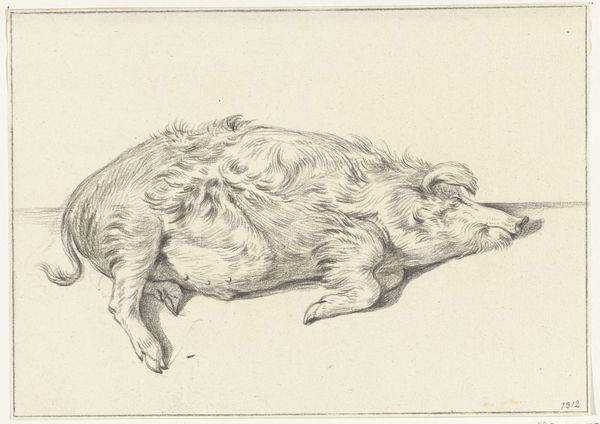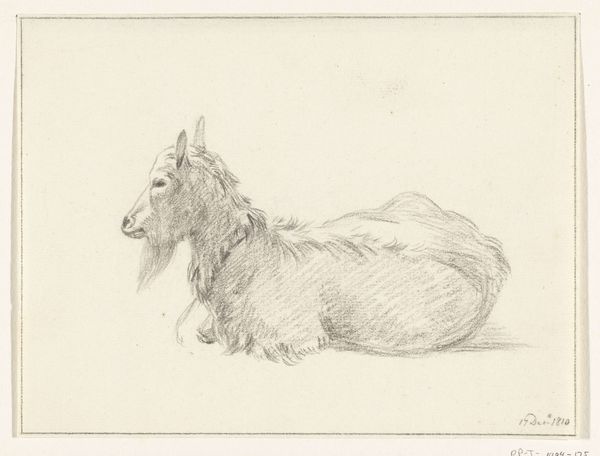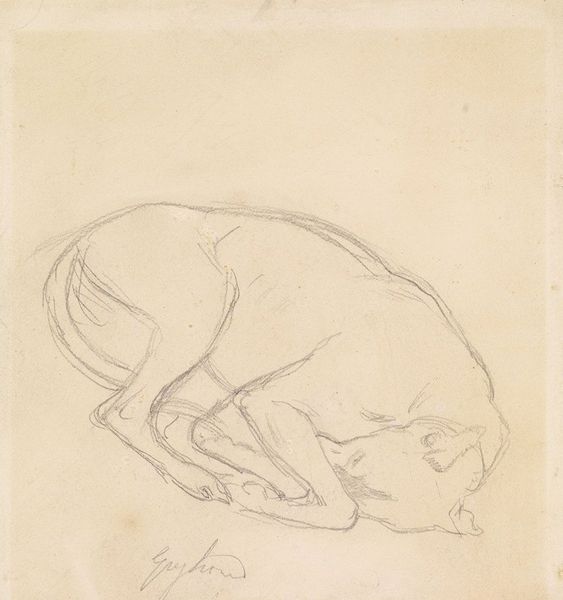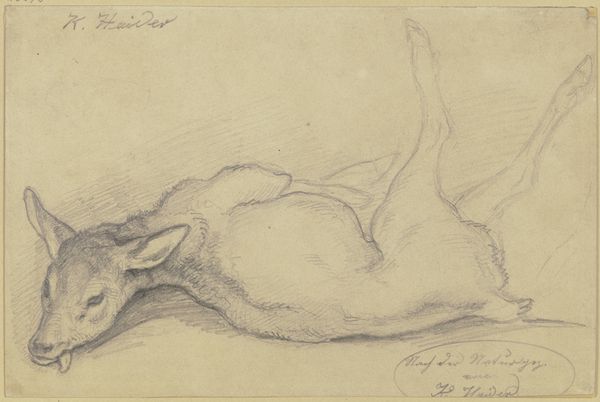
drawing, pencil
#
pencil drawn
#
drawing
#
16_19th-century
#
pencil sketch
#
landscape
#
charcoal drawing
#
pencil drawing
#
pencil
#
naturalism
#
realism
Dimensions: height 295 mm, width 421 mm
Copyright: Rijks Museum: Open Domain
Curator: Well, this is striking. We're looking at a pencil drawing from Johannes Hubertus Leonardus de Haas. It is entitled “Dead Cow after a Flood in Oosterbeek,” placing its creation sometime between 1842 and 1908. What's your first impression? Editor: Somber. The animal's sprawled pose communicates such finality, like it surrendered entirely. The medium suits the mood. A stark pencil sketch amplifies the feeling of devastation. It’s interesting that this moment in time, a disaster, was chosen to be memorialized as a subject. Curator: Absolutely. The historical context is vital here. Consider 19th-century agrarian societies: Livestock was crucial, deeply intertwined with livelihoods. The death of a cow, especially on a scale that this title indicates, signified far more than just the loss of an animal. It impacted families and local economies significantly. Editor: It's also fascinating how the artist depicts death here, absent any theatrical romanticism so typical in history painting. The cow isn't idealized. Its stiff limbs and bloating are rendered with dispassionate realism, and with it, we are prompted to reflect on human vulnerability within cycles of larger natural processes. Curator: That realism also speaks to the burgeoning naturalist and realist movements. De Haas wasn’t merely depicting an animal; he was portraying the harsh realities faced by the people connected to it. His work stands apart from glorifying the aesthetic landscape by addressing very material consequences brought by such disasters on communities, their impact felt through generations. Editor: Precisely. De Haas has brought focus to a specific time and location that allows the drawing to reach beyond this sole animal to represent issues concerning sustainability and empathy with the natural world and other species that suffer. What I also find particularly poignant is that De Haas signed at the bottom and inscribed it to commemorate the disaster. Curator: This commemoration serves as a powerful reminder. Viewing this today, it transcends its specific context and urges conversations around broader concerns surrounding human relationship with nature and disaster. Editor: Agreed. The somber tone serves as both historical document and quiet critique, promoting contemporary engagement with these narratives. Curator: Definitely. A stark rendering of a past loss inspiring reflection about our present and future stewardship.
Comments
No comments
Be the first to comment and join the conversation on the ultimate creative platform.

